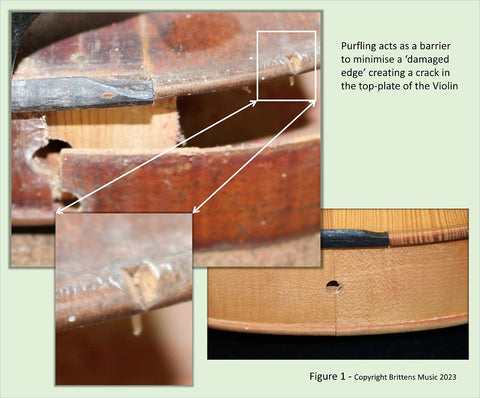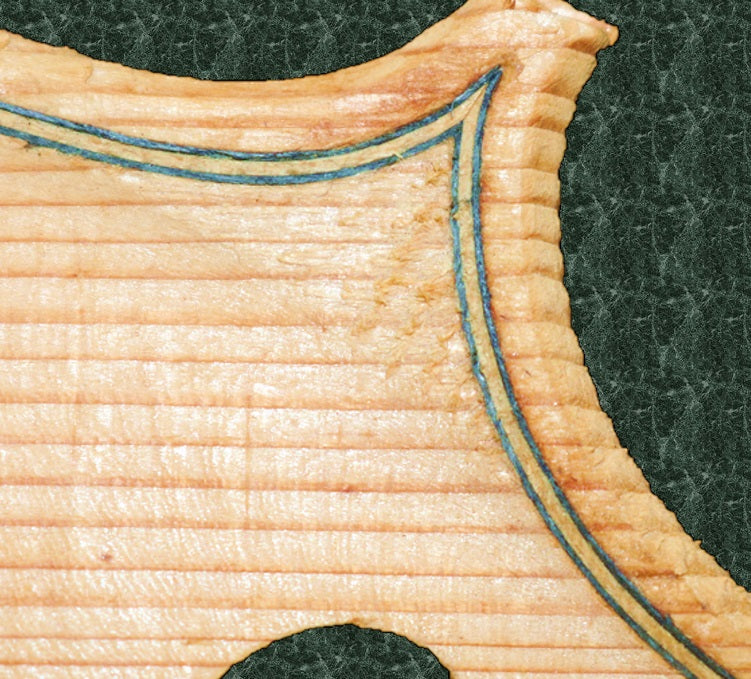What is Purfling on a Violin and Why is Purfling Important?
Posted by Brittens Team on
A violin is a remarkable piece of craftsmanship and one of the most important instruments in the Orchestra. It has an expressive capability that is virtually unequalled when played at its best, as anyone who has listened to fine classical music or a dramatic film-score will attest.
To achieve this, violins are made from many individual parts built and assembled either by expert luthiers or bespoke manufacturing processes, working to exacting standards and tight tolerances.
Violins are remarkable because, like so many instruments, they have to balance incredible strength along with astounding sensitivity - Consider the tension created by tightened strings along the instrument and yet with this strength the violin has to be able to deliver the gentle, sweet tones at the highest scales of its range.
Which leads us back to the question - What is purfling on a violin and probably more importantly, how does purfling affect a violin's quality and strength?
Most of us will be familiar with the black lines around the inside edge of the front and the back plates of the violin. On inferior violins, these are often simply painted on 'for effect', adding nothing to the instrument other than keeping the aesthetics looking similar but disregarding the structural purpose of purfling.
On the majority of violins the black lines are the outer edges of the purfling itself which is usually a laminate, typically of 3 very thin layers of material* (as per Figure 2), that are sandwiched together, with the two outer dark layers creating the familiar lines around the edges and a lighter wood or other material in between.
(*By laminating (gluing) three layers of wood or plastics together, the purfling has an increased level of strength compared to a single piece of wood or plastic inlay being used.)
This purfling laminate is inlaid into the top and bottom plates of a violin, just in from the edge. Whilst significantly adding to the aesthetic quality of the violin its use originates from the need to create a stop-break, helping to protect the violin top or bottom plates from cracking or splitting, in the event that the edge takes a knock.
'Figure 1' (Upper Left) shows an example of where the purfling managed to stop a significant chip to the edge of the top-plate spreading into the main area of the plate, causing what could have been a severe crack in this vintage violin (damaged and ready for restoration - yes we can restore it!). You can also see from 'Figure 1' (Lower Right) what the same position should look like, with purfling intact.

So to summarise, purfling is not simply for looks, it is an important feature of a violin and has two key functional benefits:
- It helps to strengthen the edge of the 'plates', whilst enhancing aesthetic appearance.
- It helps to prevent knocks to the edges developing into cracks in the main body of the 'plate'.
* 'Figure 2' below shows the inlaid purfling on an unvarnished top-plate, clearly illustrating the two distinctive lines created by the dark outer laminate layers and the different lighter laminated layer sandwiched in between.

Images and content Copyright Brittens Music 2023
